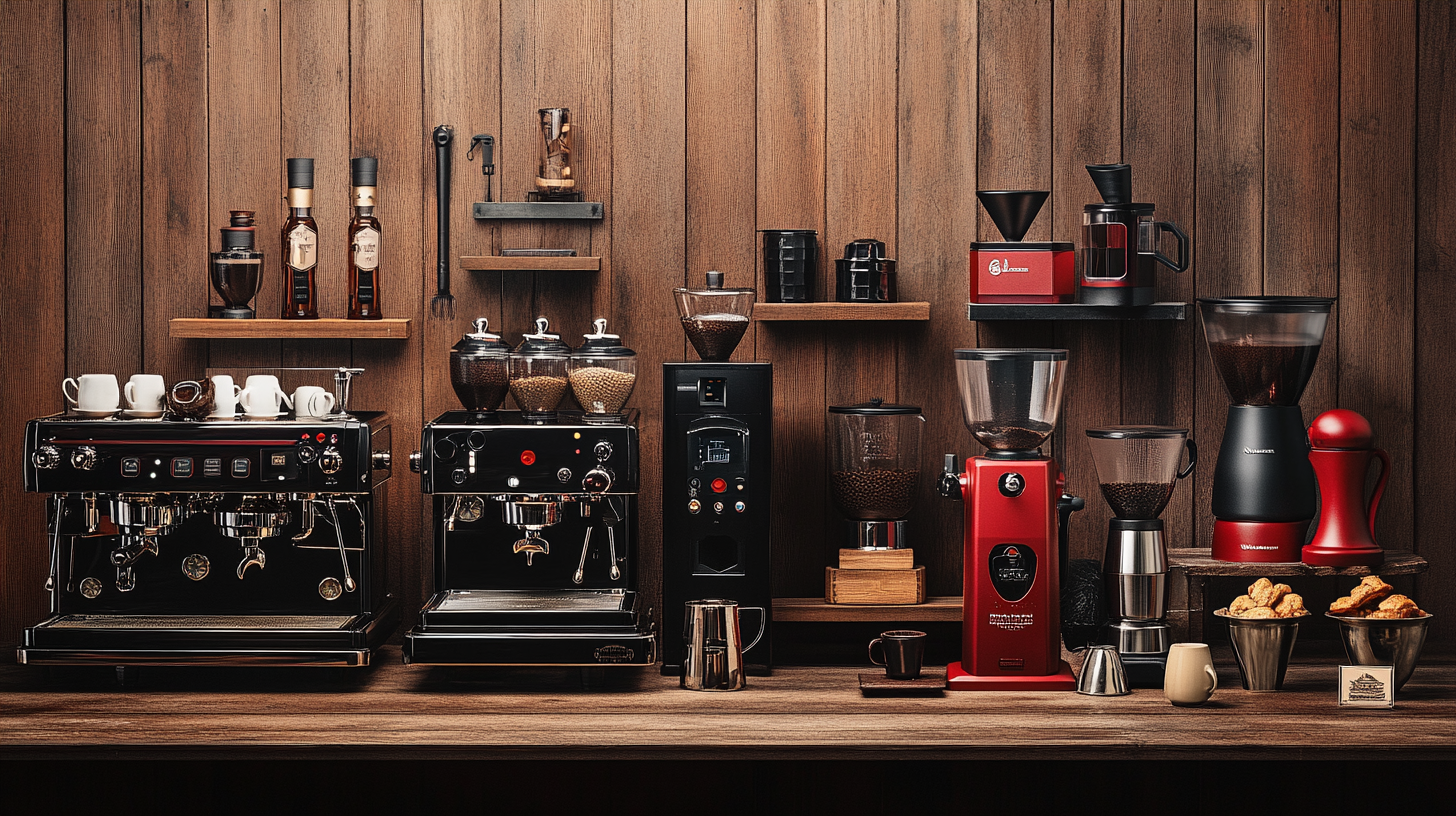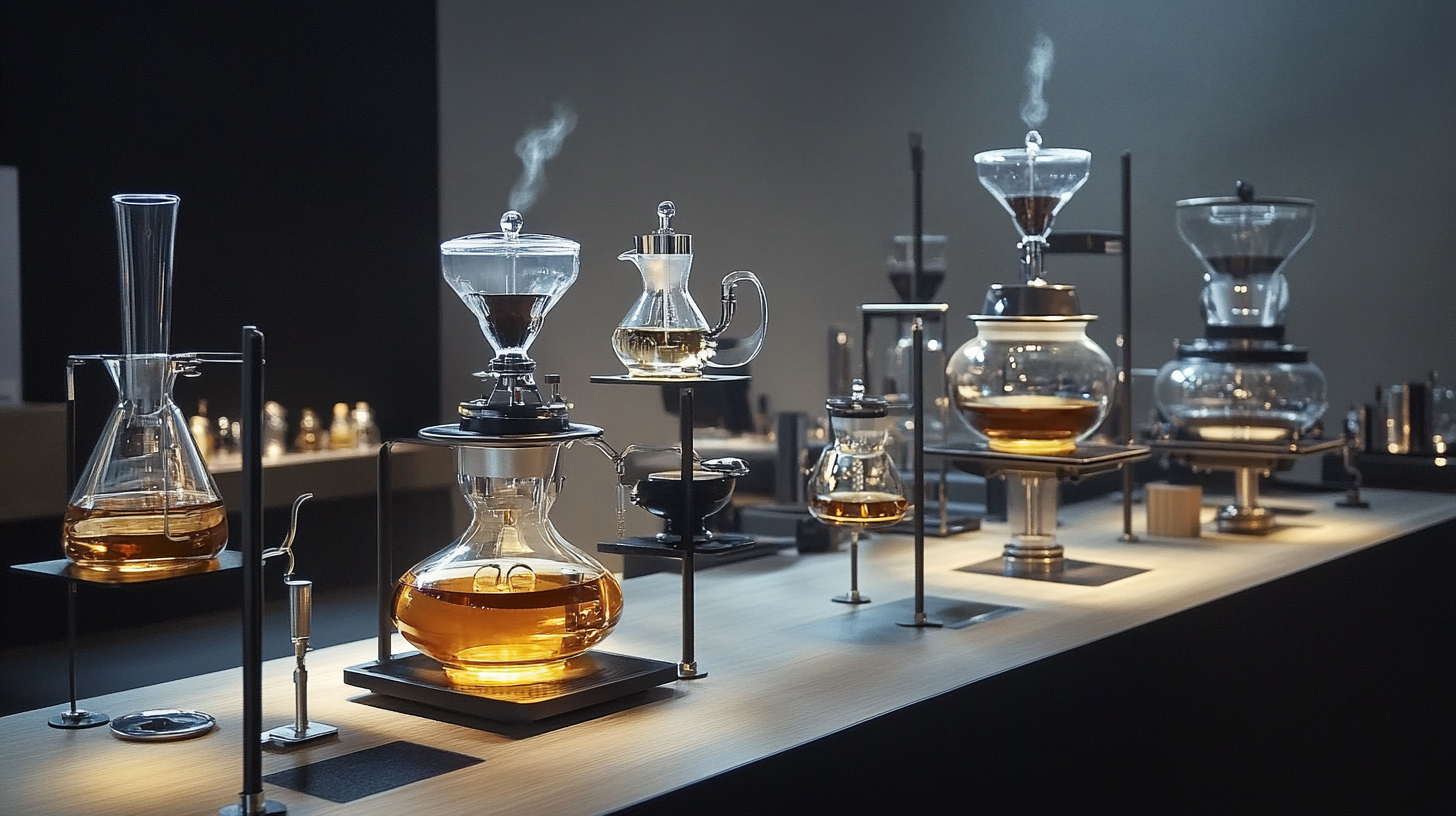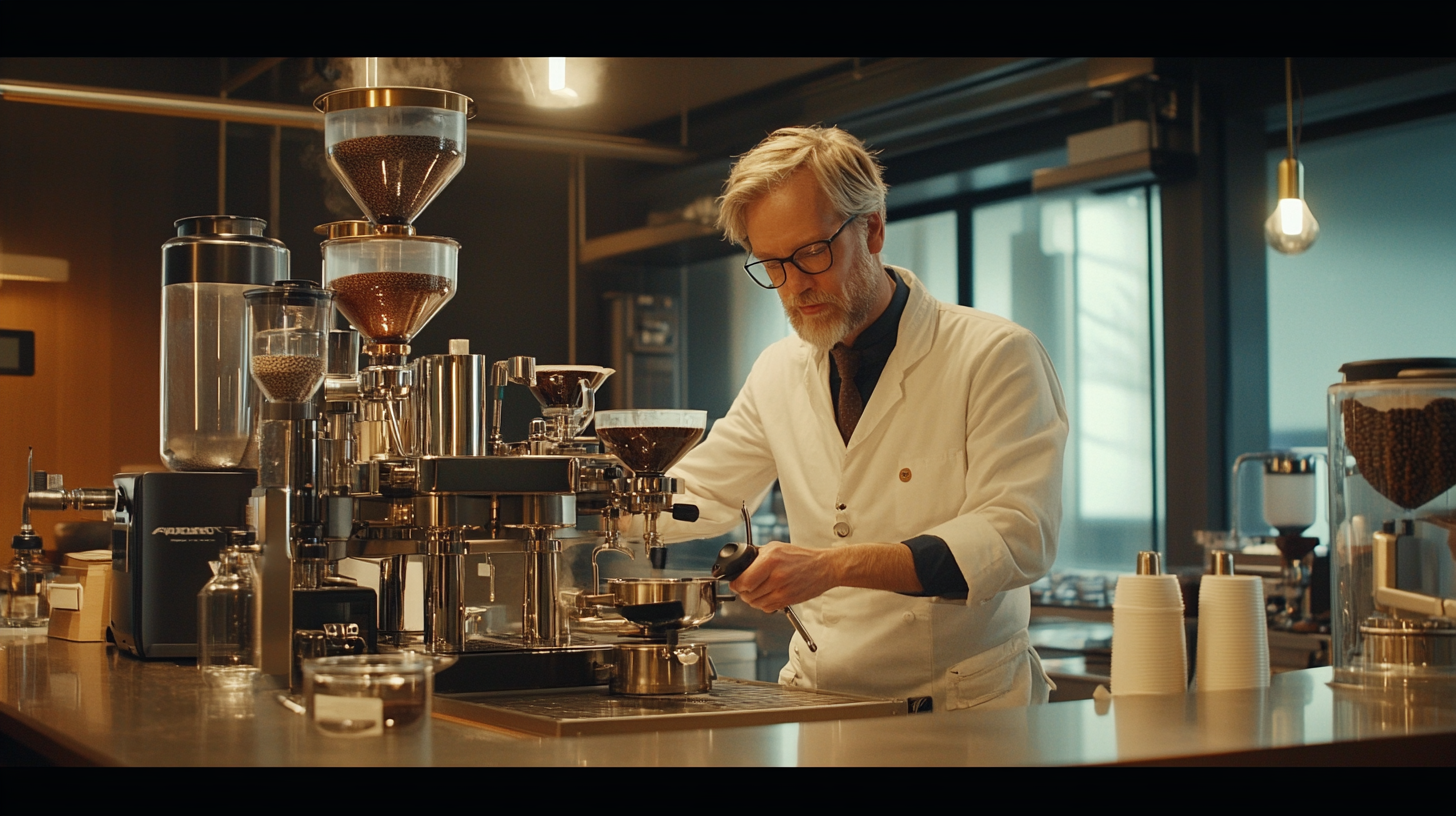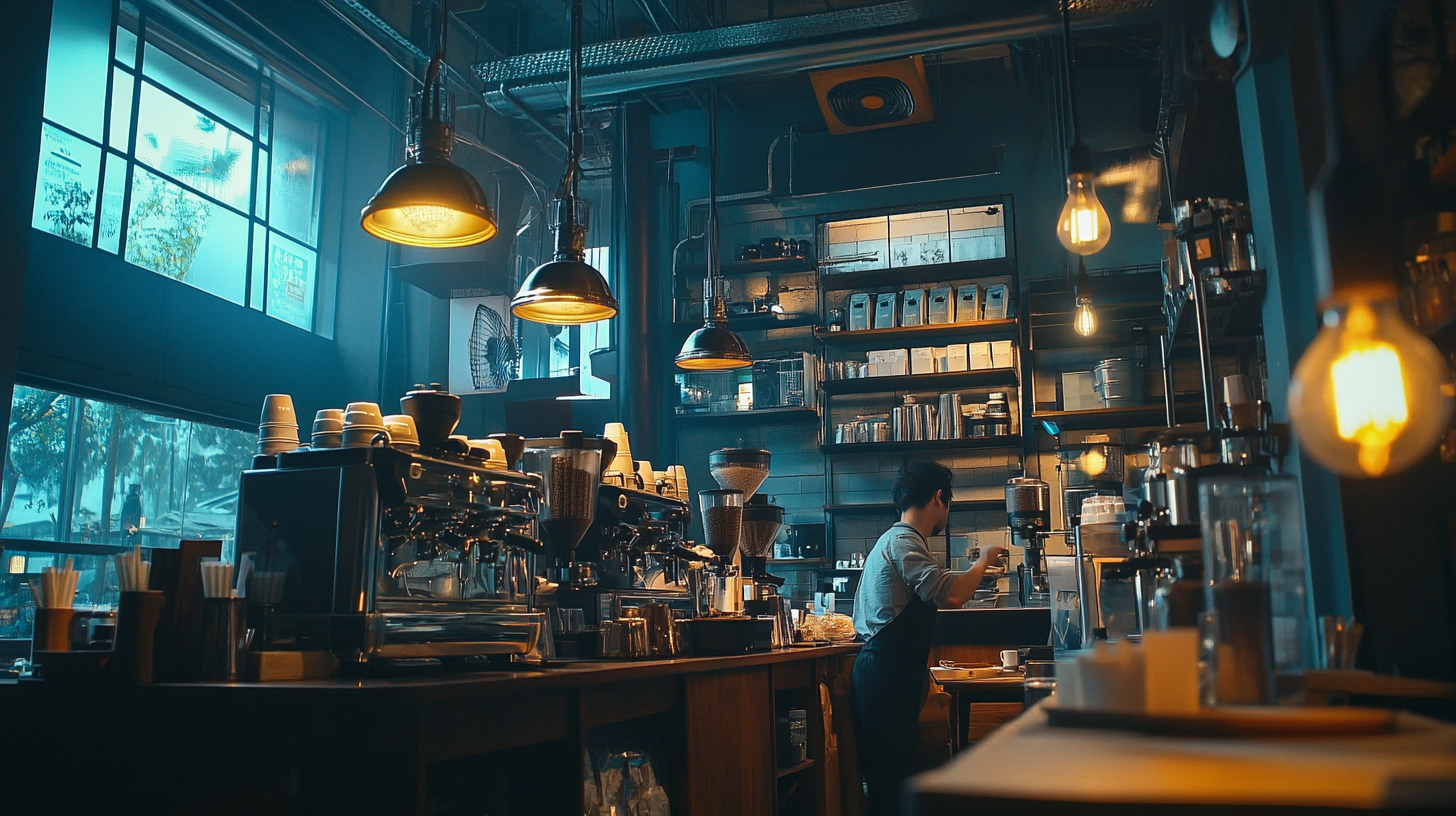The Evolution of Barista Machines and Its Impact on Global Coffee Trends
The coffee industry has witnessed a remarkable transformation over the past few decades, driven by advancements in technology and changing consumer preferences. Central to this evolution is the barista machine, which has become an indispensable tool in cafes around the world. According to the International Coffee Organization, global coffee consumption reached approximately 168 million 60-kilogram bags in 2021, reflecting a growing appreciation for premium coffee experiences. This surge in demand has compelled coffee establishments to invest in state-of-the-art barista machines that not only enhance the brewing process but also elevate the overall customer experience.
As barista machines have evolved—from simple manual devices to sophisticated, automated systems—their impact on coffee trends has been profound. The Specialty Coffee Association reports that 55% of coffee drinkers now prefer specialty coffee, a trend that has pushed baristas to hone their skills and leverage advanced equipment to meet rising consumer expectations. With features such as precision temperature control and programmable extraction times, modern barista machines empower professionals to unlock the full potential of coffee beans, fostering a culture of innovation and quality in the global coffee landscape.

The Historical Development of Barista Machines: From Manual to Automatic
The evolution of barista machines has significantly influenced global coffee trends, paralleling technological advancements seen in other industries. The journey from manual to automatic machines showcases a broader shift in consumer preferences and market demands. According to industry reports, the global coffee machine market is expected to experience substantial growth, projected to reach over $6 billion by 2025, highlighting the increasing adoption of automation in coffee preparation. Historically, manual espresso machines required skilled baristas capable of controlling intricate brewing parameters, fostering a deep connection with the craft. However, as coffee culture expanded globally, the demand for consistency and efficiency surged. Automatic machines emerged, offering baristas the ability to achieve precise results with minimal training, thereby democratizing access to high-quality coffee for both professionals and home enthusiasts. This transition aligns with a broader trend noted in other sectors, such as the rise of manual transmission vehicles in the U.S., where their share of new car sales rose slightly to 1.7% in 2023, showcasing a niche appeal for traditional methods amidst an automated landscape. Moreover, the increased popularity of automatic barista machines reflects changing consumer habits, where convenience and speed are paramount. With advancements in AI integration, machines can now replicate complex brewing techniques, elevating customer experiences in cafés worldwide. Data from market analysts indicate that automatic coffee machines accounted for over 70% of sales in recent years, emphasizing the industry's shift toward efficiency while maintaining quality. This transformation mirrors trends in other markets where technology meets traditional craftsmanship, creating new opportunities for engagement and innovation in the coffee sector.

Key Innovations That Shaped Modern Coffee Brewing Techniques
The landscape of coffee brewing has seen remarkable innovations that have not only enhanced home and café experiences but also influenced global coffee consumption trends. The advent of advanced barista machines has been pivotal in this evolution. Technologies such as precision brewing systems, which allow users to control variables such as temperature and extraction time, have transformed the art of coffee making into a more scientific pursuit. As noted in industry reports, the global drip coffee maker market size was estimated at USD 2,391.1 million in 2023, with an anticipated growth rate of 3.5% from 2024 to 2030, reflecting the increasing consumer demand for high-quality coffee experiences.
Recent innovations include the collaboration between IGadgets and Brezi, which introduced a revolutionary cold brew coffee maker capable of delivering espresso-like quality in just five minutes. Such advancements resonate well with the ongoing trend toward convenient and faster coffee solutions without compromising on quality. Similarly, the rise of pour-over coffee techniques continues to thrive as home brewers seek to replicate café-level brews, indicating a strong consumer desire for personalized coffee experiences.
The push for sustainability in the coffee sector is also reshaping modern brewing techniques. As pressures mount on the coffee supply chain, advancements in coffee-making technology aim to provide more sustainable and affordable alternatives, aligning with the increasing consumer preference for environmentally conscious products. Industry experts project that as technological innovation continues to surge, it will pave the way for new methodologies in coffee brewing, elevating the art of coffee making further into the digital age.

The Influence of Barista Machines on Coffee Quality and Flavor Profiles
The evolution of barista machines has significantly transformed coffee quality and flavor profiles, shaping global coffee trends in ways that were previously unimaginable. Recent industry reports indicate that the introduction of advanced espresso machines and grinding technology has led to a measurable increase in the consistency of coffee brewing. According to the Specialty Coffee Association, the introduction of precision brewing techniques has resulted in a 20% boost in flavor extraction efficiency. This technological advancement allows baristas to harness the unique characteristics of different coffee beans, bringing forth vibrant flavor notes that cater to an increasingly discerning consumer base.
Moreover, the integration of data analytics and sensor technology in modern barista machines has facilitated a greater understanding of coffee maceration. Studies from the Coffee Research Institute reveal that optimizing brew parameters such as water temperature and pressure can enhance flavor profiles by up to 30%. This precision not only enhances the quality of the coffee served but also ensures that the distinct flavors of single-origin beans are preserved, offering consumers a richer tasting experience. As gold standards for coffee quality continue to rise, the need for high-performing barista machines becomes even more critical in delivering exceptional beverages.
As coffee culture continues to thrive globally, barista machines remain at the forefront of innovation in the industry. By consistently enhancing the quality of coffee, these machines have influenced trends such as the surge in specialty coffee shops and the growing popularity of artisanal coffee drinks. The ongoing development in barista technology reflects a broader shift towards quality over quantity in the coffee market, where flavor and craftsmanship are increasingly valued by consumers.

How Technological Advancement is Shaping Global Coffee Culture
The evolution of barista machines has significantly influenced global coffee culture, intertwining technology with artisan practices to meet growing consumer demands. According to the Specialty Coffee Association, the specialty coffee market saw a 20% increase in global sales between 2017 and 2022, reflecting a sharp rise in consumer interest for high-quality coffee experiences. This trend is largely attributed to advancements in coffee brewing technologies, from precision espresso machines to innovative pour-over systems, which empower baristas to extract optimal flavors and enhance the overall drinking experience.
Technological advancements have not only improved the quality of coffee but also expanded accessibility to home brewing. Data from the International Coffee Organization reveals that home coffee consumption surged by 30% during the pandemic, as more people invested in advanced coffee equipment. Machines equipped with smart technology, such as app connectivity and customizable settings, allow coffee aficionados to replicate café-quality drinks in their kitchens. This shift highlights a transformation in coffee culture, marking a movement toward personalization and home experimentation.
Moreover, the emergence of eco-friendly and sustainable barista machines reflects changing consumer values. A report by the World Coffee Research notes that 60% of coffee drinkers prefer brands that prioritize sustainability, propelling manufacturers to incorporate features like energy efficiency and recyclable materials. This integration of technology and sustainability not only caters to environmentally conscious consumers but also fosters a culture of responsibility within the coffee industry, reshaping how coffee is produced, consumed, and appreciated globally.
The Future of Barista Machines: Trends and Consumer Preferences in Coffee Enjoyment
The future of barista machines is poised to significantly reshape coffee enjoyment experiences among consumers, driven by evolving technologies and changing preferences. As of 2023, the global coffee pods market was estimated at $38.01 billion, with projections indicating a robust growth rate of 6.2% CAGR from 2024 to 2030. This trend highlights an increasing consumer affinity for convenience and customization in their coffee preparation methods.
Moreover, sustainability is becoming an essential factor in consumer choices, pushing manufacturers to innovate with eco-friendly materials and technologies. The anticipated trends for 2025 point towards a surge in sustainability practices within the coffee industry, as more consumers seek out machines that not only offer quality brewing but also align with their environmental values. This shift is reflected in newer models featuring energy-efficient designs and recyclable components.
As households increasingly turn to brewing coffee at home, the demand for versatile and efficient machines continues to rise. In fact, the drip coffee maker market was valued at approximately $2.39 billion in 2023, with expected growth at a 3.5% CAGR through 2030. Modern barista machines are now equipped with advanced features, allowing users to replicate café-like experiences effortlessly. From precise temperature control to programmable settings, these machines cater to the diverse preferences of coffee aficionados, signaling a significant paradigm shift in how consumers engage with their daily brews.

